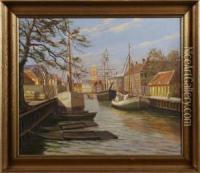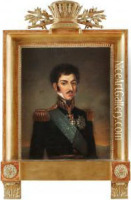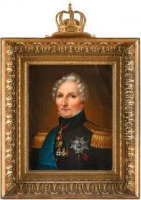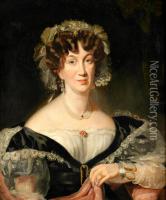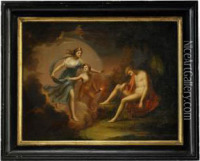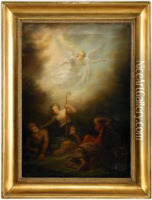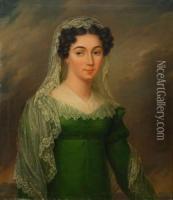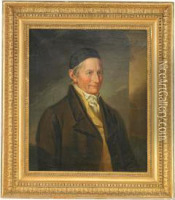Fredrik Westin Paintings
Fredrik Westin was a Swedish painter known primarily for his portraitures and history paintings. Born in Stockholm, Sweden, on September 22, 1782, Westin showed an early interest in art, which led him to pursue his studies at the Royal Swedish Academy of Arts. He was a student there from 1799, honing his skills and absorbing the neoclassical ideals that were prevalent at the time. Westin's talent was recognized early on, and he was awarded several scholarships and medals by the academy, which helped to establish his reputation as a promising young artist.
Westin's work is characterized by its meticulous attention to detail, refined use of color, and adherence to the classical tradition. Although he was primarily known for his portraits, which were highly sought after by the Swedish elite, Westin also made significant contributions to historical painting. His historical works often depicted scenes from Swedish history, imbued with a sense of nationalism and romanticism that was common in the arts during his time.
In 1812, Westin was appointed court painter, a prestigious position that allowed him to gain further prominence in Swedish society. His role as court painter involved creating portraits of the royal family and other important figures in the Swedish court, which further cemented his status as one of the leading portrait painters in Sweden.
Throughout his career, Westin also engaged in teaching, joining the faculty of the Royal Swedish Academy of Arts. His commitment to education and his influence on a generation of Swedish artists were significant, as he helped to shape the artistic landscape of Sweden in the 19th century. Westin's dedication to classical art and his skillful execution of both portraits and historical scenes left a lasting legacy in Swedish art history.
Fredrik Westin passed away on May 13, 1862, in Stockholm. His body of work remains an important part of Sweden's cultural heritage, reflecting the artistic and societal values of his time. Despite being less known internationally, Westin's contributions to Swedish art have been reevaluated in recent years, highlighting his role in the development of Swedish painting in the 19th century.
